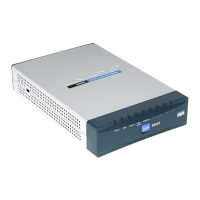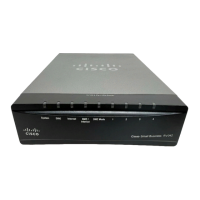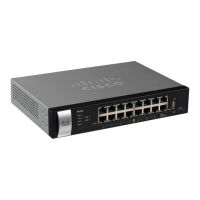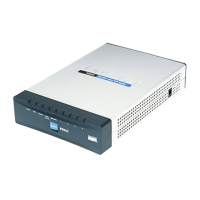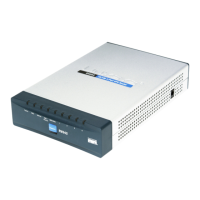Setting Up Advanced Routing
Cisco Small Business RV0xx Series Routers Administration Guide 58
3
Configuring Dynamic Routing
Enter the settings for dynamic routing by using Routing Information Protocol
(RIP) (see the glossary for more information).
Dynamic Routing for IPv4:
Click the IPv4 tab, and then enter the settings described below.
• Working Mode: Choose one of the following options.
- Gateway: Choose this mode if the router is hosting your network’s
connection to the Internet. This is the default setting.
- Router: Choose this mode if the router exists on a network with other
routers, and another router acts as the network gateway to the Internet.
In Router mode, Internet connectivity is available only if you have another
router that functions as the Gateway. Since firewall protection is
provided by the gateway router, disable this router’s firewall. See
Configuring the General Firewall Settings, page 99.
• RIP: Routing Information Protocol allows a router to exchange its routing
information automatically with other routers, and to dynamically adjust its
routing tables as network changes occur. RIP prevents routing loops by
using a hop limit. To enable this option, select Enabled. Otherwise, keep the
default setting, Disabled. If you enable this feature, also configure the
following settings:
• Receive RIP versions: Select the RIP protocol for receiving network data:
None, RIPv1, RIPv2, or Both RIP v1 and v2.
RIPv1 is a class-based routing version. It does not include subnet
information and therefore does not support variable length subnet masks
(VLSM). RIPv1 also lacks support for router authentication, making it
vulnerable to attacks. RIPv2 carries a subnet mask and supports password
authentication security.
• Transmit RIP versions: Select the RIP protocol for transmitting network
data: None, RIPv1, RIPv2 - Broadcast, or RIPv2 - Multicast.
RIPv2 - Broadcast (recommended) broadcasts data in the entire subnet.
RIPv2 - Multicast sends data to multicast addresses. RIPv2 - Multicast also
helps to avoid unnecessary load by multicasting routing tables to adjacent
routers rather than broadcasting to the entire network.

